Genre: Board Game Developer: Sculptured Software Publisher: Parker Brothers Players: 1-6 Released: 1994
Risk may possible be the most well-known strategic board game for more than two players in existence. It literally has been around for decades, and sales for ports and variants of the game are still going strong. Nowadays, the game even gets sub-franchised, sprouting editions like Risk: Star Wars, Risk: Lord of the Rings or lately even Risk: Plants vs. Zombies. And naturally, there have been lots of computer and video game ports, be it the Commodore 64 version of the game in 1988 or, most recently, the RISK ports for iOS gadgets or the XBOX Live Arcade versions created in 2010. But even though the Genesis version was created relatively early in 1994, it included a feature that is unique to this specific port, neither found in earlier nor in later ports of the game.
For those who haven’t played any of the literally dozens of different RISK board or video game variants (or clones thereof) out there, here’s a breakdown of the basic game: You have a world map separated into 42 different territories on six continents (North and South America, Africa, Europe, Asia, and Australia). Between two and six players build up armies and try to conquer the world by attacking and taking over neighboring territories. (Side note: Since the 1990s. there is also an optional rule where each player has a secret mission that instructs him or her to conquer only specific regions. Since these tasks were only included in the newer revisions of the board game and not that widespread by the time the Genesis port was being created, I’ll ignore this optional rule for the sake of this review). Each round a player can add a fixed number of new units, determined by the number of regions he already controls, to any area he owns. Should he or she also be in control of an entire continent, bonus armies are also added, determined by the size of the continent controlled (for example, Australia and South America, which both consist of just four territories, net two bonus armies, while controlling the vast and hard to defend Asia, ranging over 12 regions, awards seven). Finally, should a player successfully conquer another territory, regardless of how many attempts it took or armies he used, he gets to draw a bonus card depicting one of the 42 regions as well as one out of three types of units (infantry, cavalry, or artillery). These cards also hold strategic value. Each player may hold a maximum of five cards on his hand and swapping in three cards showing the same or one out of each unit in the game also awards new units. Should one of those cards you handed in also show a territory you already own, you also get another bonus unit to place in said territory.
By strategically placing and moving your units across the map and planning out your route of attacks, you now have to aim at becoming world conqueror while at the same time protecting your home regions. In the board game, whether an attack on another player is successful or not depends on a roll of dice. Basically speaking, if you attack another region with the same number of units that are defending said area, chances are usually about 50/50 of that attack succeeding or not. So you should usually only attack if you have superior numbers, but if you want to keep on gathering those valuable bonus cards, you also have to keep on attacking each and every round.
This is where the name-giving risk comes in, as sooner or later you’ll probably be forced to try and attack a region even if the chances to succeed may not be guaranteed. Needless to say, while the base mechanics are relatively simple to learn, and there’s also a decent amount of chance involved, playing a single instance of RISK may take up to several hours, depending on the number of players and their level of gameplay. Some players may dislike this board game because it’s one of those titles where a player can (and probably will) get eliminated entirely long before the game is over. But for others this is exactly what makes its charm. Also, the bonus armies can make the tide of the game shift rapidly, especially since eliminating another player may net you all the bonus cards he hadn’t turned in yet, which will in return net a sweet new influx of new units.
Now, turning a perennially successful board game like RISK into a computer or video game may seem like an obvious choice. You have a solid concept as well as tried, proven, and already fine-tuned game mechanics. All you need to do is slap on some decent graphics and sound effects, no? Well, not quite. Board games like RISK live from the competition, from being able to engage your other human opponents using the game’s mechanics. The problem is that while in a board game everyone can interact with the game directly and pretty much at any time – even when a player has to wait for her turn she can still look at her cards, for example – in the nineties that wasn’t really possible for a console version, especially without any kind of online play. Passing the controller around and moving numbers around on a screen feels less immersive than being able to physically move units around on a world map. However, one of the big advantages video games hold over their board counterparts is that the former can also be played just by yourself – as long as the AI holds up.
In the Genesis port of the well-known classic, easily identified as classic mode, you have the option of setting up a game with two to six players, made up of either human or computer opponents. The AI itself can be tuned in three difficulty settings (beginner, intermediate or expert), each of which is noticeable different. At the lowest setting, the computer has the tendency to attack rather randomly, even if the defense may outnumber his offense. At intermediate the skill is noticeably better, though the AI may hang itself up on being doggedly determined to conquer a specific territory and dumping most of its units in one region, making it very vulnerable on other potential fronts. Playing against several computer opponents at the highest setting, finally, becomes a true challenge. However, having several computer-controlled players at the same AI setting made things a bit predictable: Use the same setting for all, and they all follow the same strategy, making the game easier to exploit. Playing against four expert and one intermediate AI opponents though make for a really interesting and engaging play, and while some play sessions may be over rather quickly (on my first try against two intermediate and two beginner opponents I only took seven rounds to complete the game, equaling less than half an hour). On the expert setting the game may take up to several hours.
While this console port is still about as engaging as the board game (even without human opponents), and the ability to freely set the number of players and the sill of the computer controlled adversaries allow for pretty varied settings and handicaps, things might get a bit repetitive after a while. The attack sequences are pretty nice but have no variety. It’s just the same image of cannons firing upon one another (while the computer calculates the odds in the background, kind of like virtually rolling the dice of the board game version) and numbers whittling down. You don’t actually see troops being defeated until the very end of an engagement. Each battle looks the same; it just takes a bit longer sometimes. The presentation isn’t bad, mind you. The graphics, whenever they don’t just show statistics, are rather pretty, and the sound in the battle stages has a satisfying “oomph” to it. But with all the repetition, it might get a bit boring after a while, especially since you only get to look at the battle sequences, not to actually act in them, at least not in classic mode.
That’s where the unique feature of the Genesis version comes in. The developers at Sculptured Software might have anticipated that some console gamers might not be interested in just imagining battles in their hand, but that having a gamepad means that they might like to actually have direct control over their campaigns instead. That’s why, next to the aforementioned classic play style, they’ve also included an arcade mode where you get to fight your own battles. While the setup of the game (including choosing your opponents and your starting territories and planning out and moving your units) is pretty much the same, whenever a battle breaks out, you get to take direct control. The battles are then shown in a split-screen, with the attacker on the left and the defender on the right side. Here, you’re firing a cannon while enemy troops are running across the map in front of you. In a neat touch, they added the classic unit types. Shooting infantry, which stands still every once in a while, decreases the enemy’s number of units by one. Cavalry rides on in a continuous motion and is itself worth two units. You yourself are in charge of the artillery and shoot them down.
Adjusting your aim with the D-Pad, you fire shots at your enemies by pressing the A button. While the beginner enemy is laughable in this mode and in intermediate provides a somewhat random but enjoyable exercise that, after a little training, allows you to plow your way through the world map even if you’re attacking with a minority, you’d better be an expert in controlling the battles before daring to challenge an expert-level opponent. This AI is a beast, whittling your troops down to zero in no time, hitting his target with almost every shot in rapid succession! So if you want to beat the game in arcade mode with the AI set at the highest skill, you’re definitely in for a meaty challenge.
You can switch between classic and arcade mode at any time. If you don’t want to watch every single fight sequence, you can even switch the battle view off. However, you can only do so when it’s your turn, and the game then automatically switches to classic mode. So if you don’t want to watch every single fight between AI opponents, but still want to manually defend yourself arcade-style when you’re being attacked, tough luck. You either have to skip through these scenes and switch back to arcade once it’s your turn again, or suck it up and watch every single battle unfold, which may take up quite a lot of your time.
Overall, this is one of the best ports of the classic board game out there. While it isn’t that hard to read the AI after several playthroughs, each game still remains rather varied and fresh. Though the presentation might get a bit repetitive over time, it stays fresh enough to hold one’s attention and invites to come back and have another go at the game again. And the arcade mode, while relatively simplistic, provides a refreshing challenge and a nice diversion from the regular game. This is one of the few RISK ports (if not the only official one) that allows you to have direct control over your battle outcome, and it pulls this off rather well. Regardless of which mode, however, it can get a bit repetitive and even a little bit tedious at times, especially if you’re forced to watch every single battle sequence play out. Nevertheless, the spirit of the game remains intact and even gained a neat little extra on top.This port does not only the original source justice, but on top of that does just enough to make it not feel copied but rather well-suited and welcome on the console.
SCORE: 7 out of 10

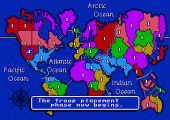
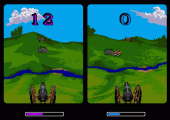
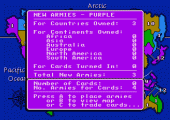
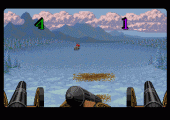
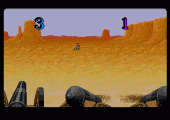
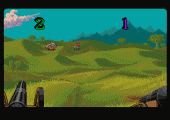
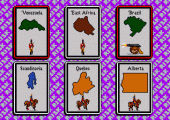
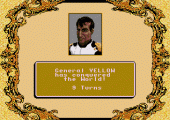

Recent Comments